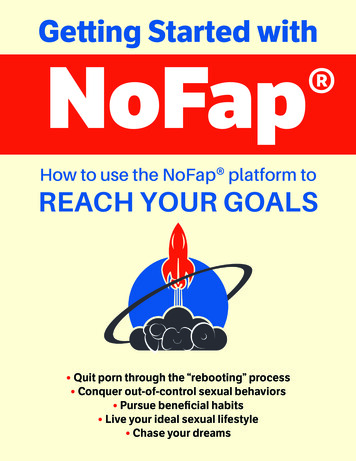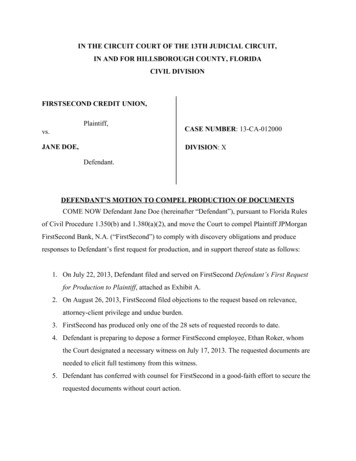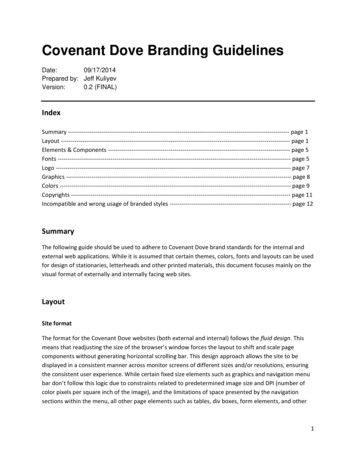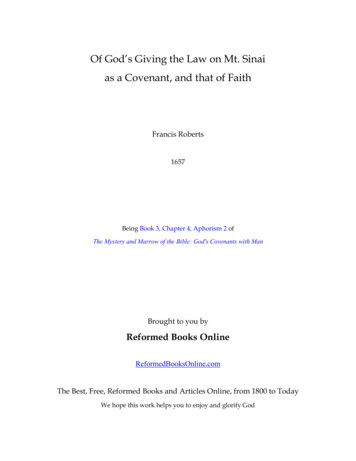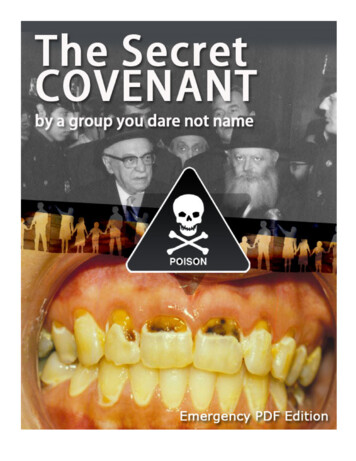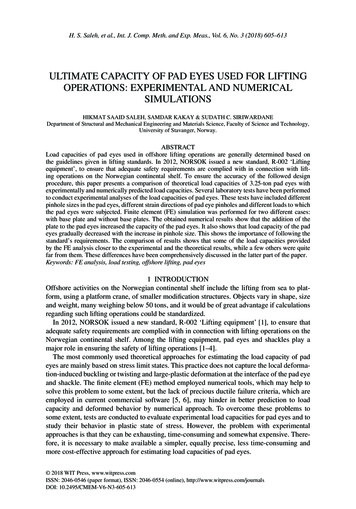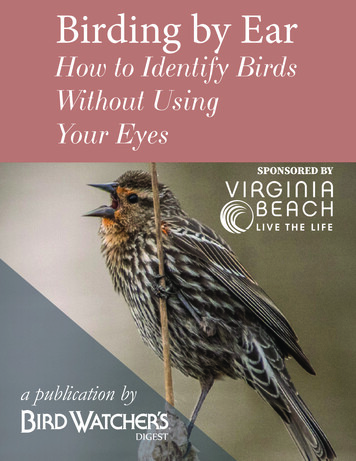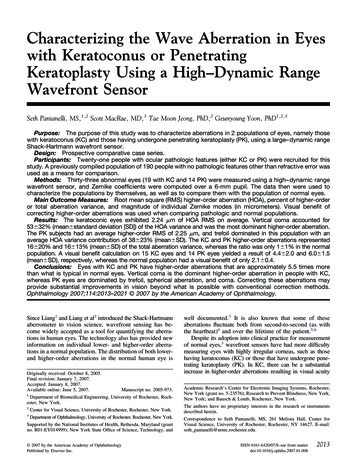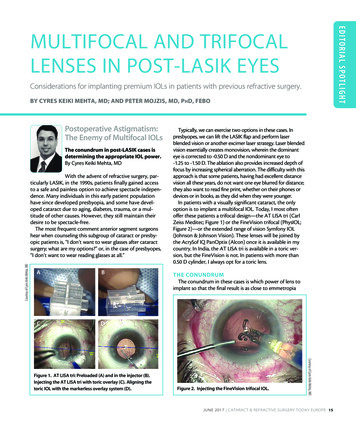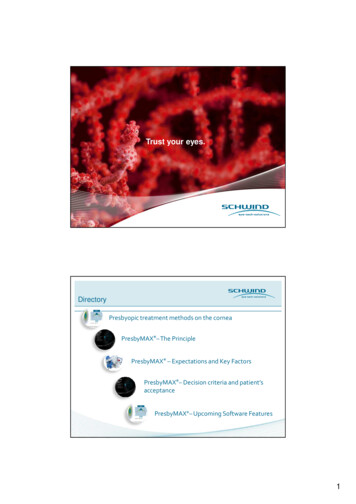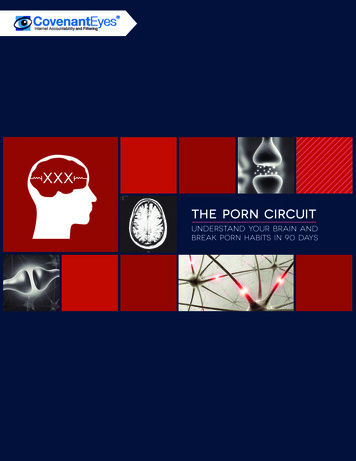
Transcription
XXXtHe porn CircuitUnderstand your brain andbreak porn habits in 90 days
XXXTable of ContentsIntroduction:Stop Looking at Porn, You Sicko!3www.covenanteyes.comChapter 1:Your Sexy Plastic Brain61.877.479.11191525 W. King St., PO Box 637 Owosso, MI 48867Chapter 2:Your Brain’s Sexual Cocktail9Copyright 2013 Covenant Eyes, Inc. Allrights reserved.Chapter 3:Stuck in a Rut14Chapter 4:32 Flavors: Why We Like Sexual Variety20You are free to distribute print copies of thise-book to anyone you choose. As a courtesy,e-mail us at resources@covenanteyes.comand let us know you are doing this so we cankeep you informed of other similar resources.24To distribute this e-book electronically, we askthat you share the -ebookChapter 6:Habits of Freedom29For more information about sharing ourmaterials electronically, ces that can help42Endnotes44Chapter 5:Ain’t Nothing Like the Real Thing, BabyAbout The Author: Sam BlackSam Black is an Internet Safety Consultant and a manager at Covenant Eyes. He joined theCovenant Eyes team in 2007 after 18 years as a journalist, serving as a reporter and editor fornewspapers and magazines in six states. He has been married for 17 years and is a father of two.The Porn Circuit 2
XXXIntroduction:Stop Looking at Porn, You Sicko!Comedian Bob Newhart has been making people laugh for decades. One of my favorite skitsfeatures Newhart playing the role of a therapist.1After one patient describes her fears of being buried in a box, he advises her to listen carefullyto two words and incorporate them into her life. “Are you ready?” he asks. “Here they are “Stop it!” He shouts.When she seems puzzled by the therapy, he says, “This isn’t Yiddish, Catherine. This is English:Stop it! You don’t want to go around in life being scared of being buried in a box, do you? Itsounds frightening. Then stop it!”As Catherine brings up other phobias and problems, she receives the same advice. She suffersfrom bulimia. “Stop it. Are you a nut of some kind?” She has self-destructive relationships withmen. “Stop it!” Newhart shouts. She fears driving. “Get in the car and drive, you kook! Stopit!” For reasons apparent to most people, poor Catherine doesn’t feel comforted and demandsmore from her therapist.“I don’t like this therapy at all. You’re just telling me to ‘stop it,’” she confronts.“Okay, let me give you 10 words that I think will clear everything up for you,” he says. “Do youwant to get a pad and a pencil for this one? Are you ready? Here are the 10 words. Stop it or I’llbury you alive in a box!”Hopefully, no one meets a therapist like this. But unfortunately, this is the pointless counselthat many people give themselves or to others regarding porn use: “Stop it!”No one likes to admit they feel out of control, but then pivotal moments come along that wakeus up to what our habits are costing us.The Porn Circuit 3
IntroductionThe perception of these costs can vary. A person may be troubled or even disgusted bytheir pornography use, or it may be having a disturbing effect on their sexual thoughts andbehaviors. Pornography can have negative impacts on relationships, from ignoring lovedones in order to spend time with porn to pornography destroying intimacy, which can leadto divorce. Pornography often reduces sexual potency, including premature ejaculation anderectile dysfunction.2Others may realize that pornography use conflicts with their moral or religious beliefs. Theymay recognize that the men and women in porn are real people that are typically victimized,especially women. “This is someone’s daughter,” they may recognize. Women in porn are oftentreated with violence, and are required to perform sex acts that are abusive.3 Pornographycontributes to sex trafficking, and the victims of sex trafficking become part of the pool of videoand images circulated online. Between 14,500 and 17,500 sex slaves are trafficked into the U.S.each year. Another 300,000 American children are at risk for trafficking each year.4After binging on porn, many men and women feel ashamed of having given in again. Theypromise themselves, others, and even God that they will never again view erotic images, videos,or stories, or enter online sex chatrooms. Typically, this promise is little more than a repeatedplea that echoes through their memory. They may even experience periods of abstinence fromporn, whether a couple of days, a week, or even a month, but eventually they fall again.If a person could just “stop it,” quittingporn would have happened by now.The vicious circle:Feeling ShameKeeping it secretViewing pornto feel betterActing OutFor some, a vicious circle plays out:viewing porn to feel better, acting out,feeling shame, keeping their secret,viewing porn to feel better, acting out,feeling shame, keeping their secret Themerry-go-round continues, and thoughnauseous from this spinning, escapeseems unrealistic.Others may feel no shame about usingporn and may see it as a recreationalactivity. But they still might recognize itsadverse impact on their sex life, work,and family. They may realize that theyneed porn and masturbation just to feelnormal. They may notice that their pornuse has escalated to more varieties, or toscenes they feel (or once felt) are hurtful,disgusting, or inappropriate.The Porn Circuit 4
Introduction“The classic question posed is, ‘Can you stop looking at porn for 30 days?’” asks Dr. MarkLaaser, an author and sex addiction therapist. “If you are truly addicted, your brain will go on afive-alarm fire in about seven to 14 days.2“Do you notice that you are tempted to look at pornography when you are experiencingproblems of mood?” Laaser asks. “When you are stressed, depressed or anxious, do you go toporn? Are you noticing there is a mood-altering quality to this for you?”The coming chapters will discuss the neurology of how pornography often leads to a cycleof dependency. The research of neurologists will explain how obsessions with pornographytake root, and why these habits, or even addictions, are so hard to break. By uncovering thisresearch and discussing it in everyday language, people can hopefully begin to make personaland positive changes. Therapists will explain that though the mind can get stuck on anobsession, with knowledge, understanding, and discipline old patterns can be exchanged fornew and positive behaviors.“When you understand how the brain works somewhat better, you can use that informationto literally enhance your own perspective, broaden your own sense of your capacities and,with that awareness, learn to focus on other things knowing that if you focus on other thingsconsistently you can change what’s there. You can change the way that real estate is used,” saysDr. Jeffrey Schwartz, a leading expert in neurology.3Rather than provide neurological and sociological excuses for addictive behaviors or for actingout, this information is designed to open doors of understanding. Science shows us that thebrain was designed to learn, and, in the words of Yoda: “You must unlearn what you havelearned.” For many, it is time for a renewing of the mind.Knowledge precedes understanding, and understanding precedes change.Volumes have been written on this topic, and readers will discover a multitude of resourcesfor further review. The coming pages will provide an overview of concepts and a synopsis ofmodern research. This is not an exhaustive resource, but this is written to provide you with ageneral understanding. Yes, our incredible brains can work against us, but new positive neuralpathways and habits can form.The Porn Circuit 5
XXXChapter 1:Your Sexy Plastic BrainOur biggest sexual organ rests between our ears.The brain is where we truly experience intimacy, pleasure, love, and satisfaction. But it is alsowhere we create negative feelings, bad habits, destructive compulsions, and addictions.Compulsively viewing pornography is a prime example.It should be easy to say, “I think porn is causing pain in my life, so I’m just not going to look atit anymore.” After all, when you touch a hot stove, your brain says, “Ouch, that burns. No moreof that!” You may accidentally burn yourself in the future, but you won’t intentionally plopyour finger on a burner. If shame and negative feelings follow porn use, and a person promisesthemselves and others not to look at it again, shouldn’t that be enough to ensure they will notseek out porn weeks, days, or even hours later?Unlike the hot stove, porn is exciting. It can completely capture someone’s attention. Itdistracts a person from any other thought, and through orgasm it delivers a potent dose ofeuphoria. In a simple scenario, the brains says, “I saw porn. I masturbated. It felt good. In thefuture, let’s do it again. Really, I need this again. I’m not sure I’m getting what I need. Howabout a little more?” Mix in the anxiety and excitement of using the forbidden, the fear of beingcaught, and even secrecy, and the brain learns even faster during these intense emotionalbursts. With each repetition the brain receives powerful cocktails of signals and hormones thatensure future cravings.Interestingly enough, our brains have the right idea, but the process has been hijacked leavinga sense of dissatisfaction and longing. We were created to say, “My spouse is attractive to me.When we bond it captures my complete attention. When we touch, I feel aroused, cared for,loved, and I enjoy a spiritual connection. I feel not only a physical rush but also a deep bondwith my spouse and sexual satisfaction. This person is part of me. Let’s do that again soon.”People, unlike any other animal, were designed to have sex with their spirit, soul, andbody, says sex addiction therapist Dr. Doug Weiss, author of Clean: A Proven Plan for MenThe Porn Circuit 6
CHapter 1: Your sexy Plastic BrainCommitted to Sexual Integrity. Porn not only leaves out the spirit and soul, but also thetenderness and love expressed through a spouse’s body, their words, their giving, and onand on.Unlike real intimacy, there are multiple parts missing from the pornography puzzle. A commongripe among porn users is that it is not ultimately satisfying, and they are left wanting. There isso much missing. Many find looking at porn is not enough and seek ways to act out what theysee in porn. It should be no surprise that pornography use is correlated with a 318% increase ininfidelity.2So, why are so many people engrossed by what leaves them unfulfilled while bringing harm totheir relationships?The answer is rooted in the neural pathways of our incredible brains. Through experiencesin youth, adolescence, and adulthood, we consciously or unconsciously map routes in ourbrains that allow for arousal and pursuit of a reward, even if that reward becomes less and lessfulfilling.Learning what you likeBelieve it or not, men are not born ogling the boobs of big-breasted brunettes or blondes orwhatever a man fancies. Nor were women born excited by erotic stories, videos, or whatever awoman finds compelling.Have doubts? Then why in some cultures do women walk around uncovered from the waistup and men couldn’t care less, while in most cultures cleavage is considered immodest orsexually tempting? The same is true of fetishes, which are essentially objects, such as a shoe,a foot, or lace or fur on a garment. Why does one person find an item of clothing or an objectuninteresting, while others instantly think of sex?It is learned.You learn to associate sexual arousal with specific stimuli, writes Dr. Norman Doidge in TheBrain That Changes Itself.Doidge explains that “human beings exhibit an extraordinary degree of sexual plasticitycompared with other creatures.”3 By “plasticity” he means that our brains and our sexualityare molded by our experiences, interactions, and other means of learning, which is why peoplevary in what they say is attractive or what turns them on. The brain actually creates neuralpathways that label a specific type of person or activity as arousing.What we find arousing cannot merely be explained by evolution. Biological explanations areoften too simplistic, Doidge argues. Strong muscles on a man might predict he can protect hisoffspring, but a woman may find a man’s voice more attractive than the surface of his body.The Porn Circuit 7
CHapter 1: Your sexy Plastic BrainIn past centuries, women in art were often large by today’s standards of super-thin fashionmodels. Doidge calls these preferences “acquired tastes:”Acquired tastes are initially experienced with indifference or dislike but later become pleasant — theodors of cheeses, Italian bitters, dry wines, coffees, patés, the hint of urine in a fried kidney. Manydelicacies that people pay dearly for, that they must “develop a taste for,” are the very foods thatdisgusted them as children.In Elizabethan times lovers were so enamored of each other’s body odors that it was common for awoman to keep a peeled apple in her armpit until it had absorbed her sweat and smell. She wouldgive this “love apple” to her lover to sniff in her absence. We, on the other hand, use syntheticaromas of fruits and flowers to mask our body odor from our lovers. Which of these two approachesis acquired and which is natural is not so easy to determine. A substance as “naturally” repugnantto us as the urine of cows is used by the Masai tribe of East Africa as lotion for their hair — a directconsequence of the cow’s importance in their culture. Many tastes we think “natural” are acquiredthrough learning and become “second nature” to us. We are unable to distinguish our “secondnature” from our “original nature” because our neuroplastic brains, once wired, develop a new nature,every bit as biological as our original.4This will come as sad news to many. The attraction, compulsion, and even addiction toporn are learned behaviors, which means people play a huge role in their own habituation.Don’t b
Our biggest sexual organ rests between our ears. The brain is where we truly experience intimacy, pleasure, love, and satisfaction. But it is also where we create negative feelings, bad habits, destructive compulsions, and addictions. Compulsively viewing pornography is a prime example. It should be easy to say, “I think porn is causing pain in my life, so I’m just not going to look at .
